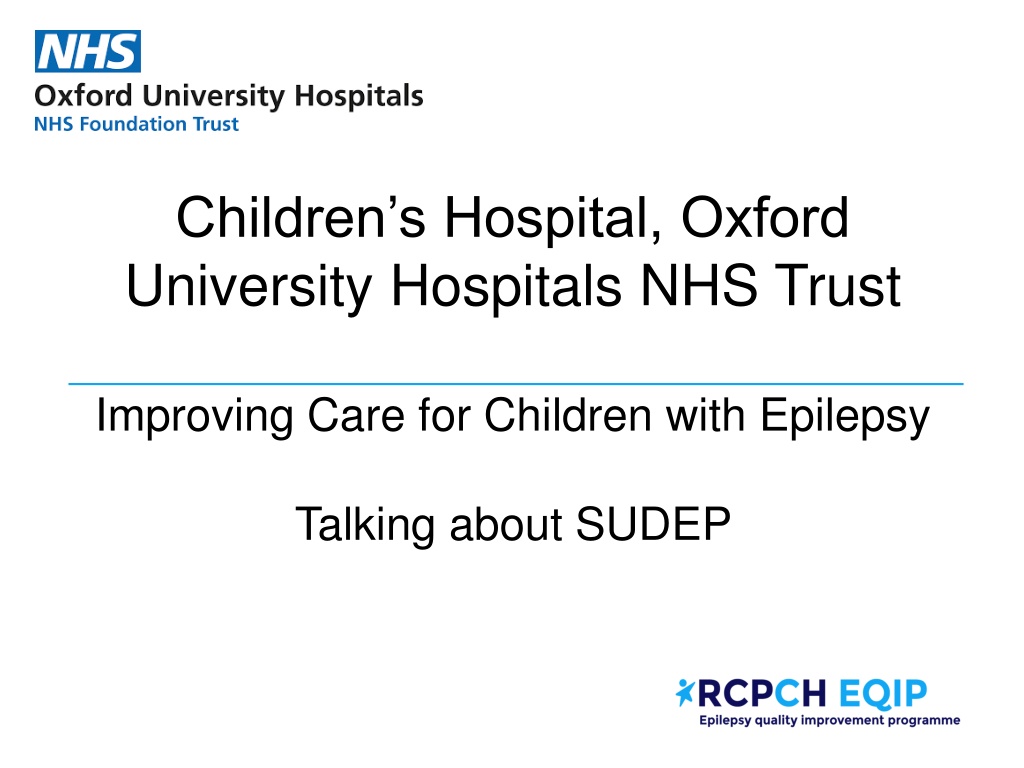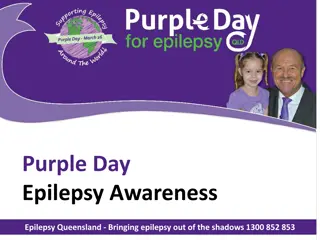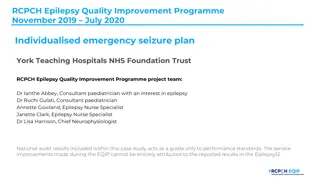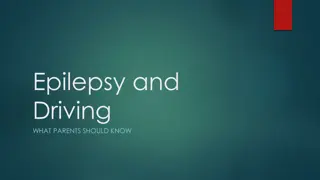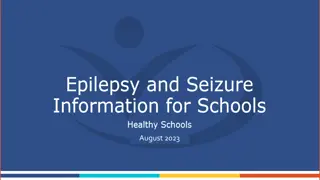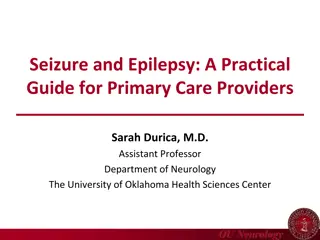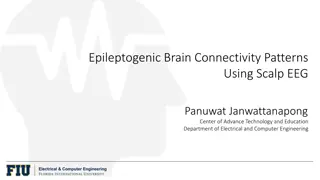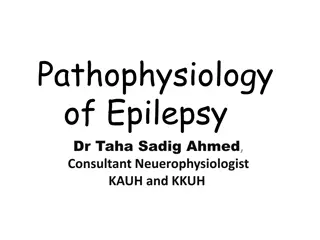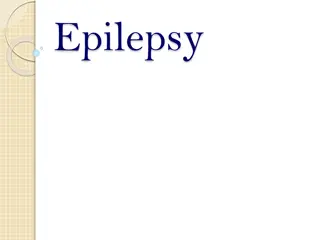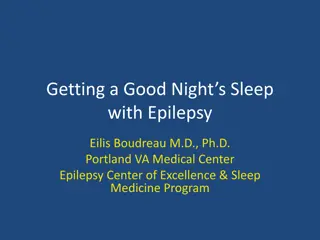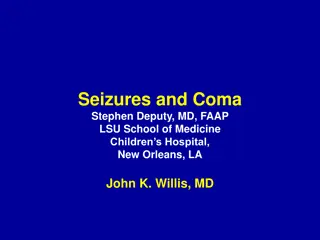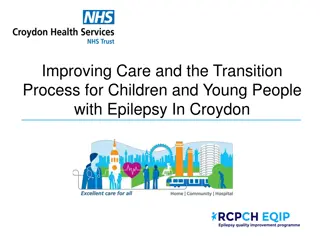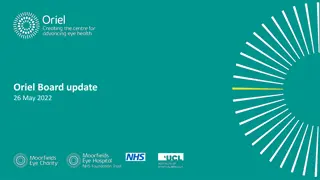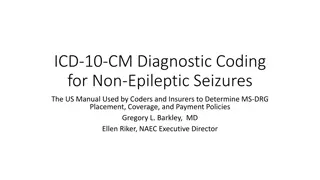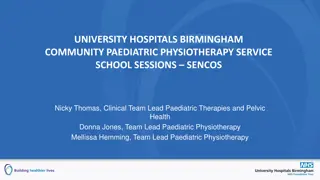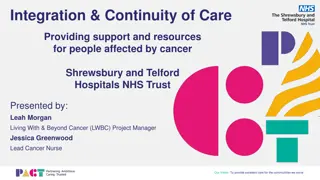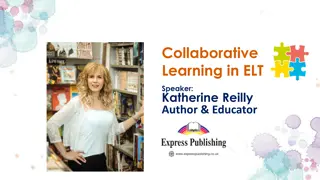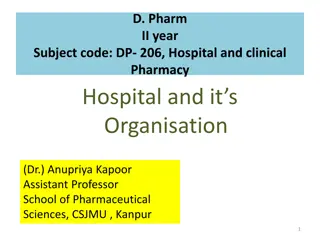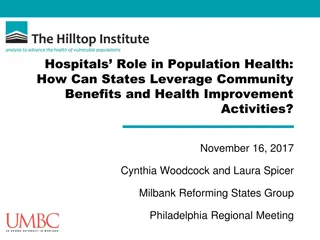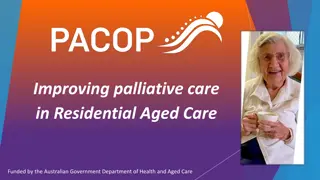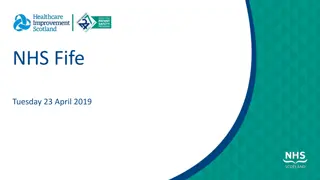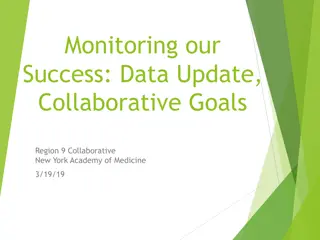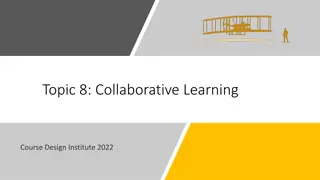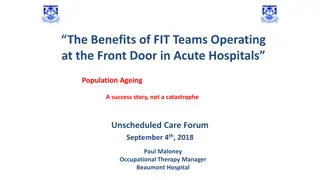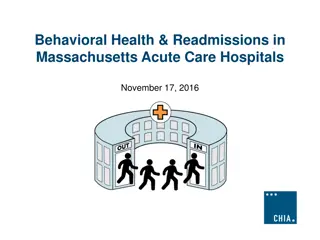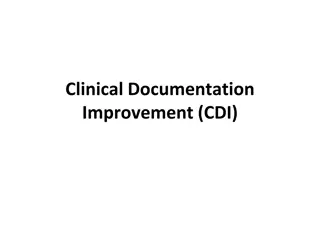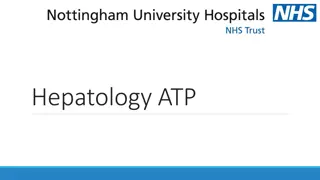Enhancing Care for Children with Epilepsy: A Collaborative Approach at Oxford University Hospitals
This project by Oxford University Hospitals aims to improve care for children with epilepsy, particularly focusing on discussing SUDEP with families. The team, consisting of specialists in pediatric neurology and epilepsy nursing, is working to standardize a toolkit for clinicians and engage stakeholders to ensure personalized discussions on SUDEP for at least 80% of children with epilepsy. The initiative addresses the lack of local resources and aims to increase knowledge, confidence, and capacity among healthcare providers to better support families affected by epilepsy.
Download Presentation

Please find below an Image/Link to download the presentation.
The content on the website is provided AS IS for your information and personal use only. It may not be sold, licensed, or shared on other websites without obtaining consent from the author. Download presentation by click this link. If you encounter any issues during the download, it is possible that the publisher has removed the file from their server.
E N D
Presentation Transcript
Childrens Hospital, Oxford University Hospitals NHS Trust Improving Care for Children with Epilepsy Talking about SUDEP
Your Team Rohini Rattihalli, Consultant Paediatric Neurologist Eleanor Yule, ST8 Paediatric Neurodisability Geetha Anand, Consultant Paediatrician Allison Mollett, Epilepsy Nurse Specialist Victoria Nesbitt, Consultant Community Paediatrician and Hon Senior Clinical Lecturer
Aim Our first SMART aim: To standardize a toolkit for clinicians to use for providing information on SUDEP to families, to enable a personalized yearly discussion on SUDEP with at least 80% of children with epilepsy Our project is ongoing, can you help??
Background Rationale Lack of local resources to draw on when discussing SUDEP Culture- avoidance, anxiety, lack of prioritisation
Driver Diagram Primary Drivers Secondary Drivers Change ideas Knowledge Confidence Capacity/caseload Standardized, editable text Buy in and review by patient experts Consult with clinical teams about preference for resources Make the intervention measureable Promote the project internally as an available resource Staff Capacity To standardize a toolkit for clinicians to use for providing information on SUDEP to families, to enable a personalized yearly discussion on SUDEP with at least 80% of children with epilepsy Tailored to epilepsy type Family-clinician relationship- new vs established Expectations and previous exposure Acceptability to families Accessibility of the intervention Electronic patient leaflet Shared computer drive Hard copies?
Stakeholder Map Paediatric Neurologists General Paediatricians Epilepsy Nurse Specialists Families affected by SUDEP Paediatric Trainees High Paediatric Emergency Department Staff Interest Low Low Influence High
Patient and Family Engagement Suggested edits to draft text Expanded the resources we can sign post to
PDSA cycles A P S D Cycle 4 Rollout Cycle 3 Consultation with SUDEP action A P S D Aim of the test Developing the correct resource to use for discussing SUDEP Cycle 2: Consultation with regional epilepsy network (google forms) Cycle 1 First draft of text
What did your test reveal? We are still very much at a stage dealing with qualitative information Consultation with Regional Epilepsy Network Most agreed an EPR smartphrase would be useful Consultation with SUDEP Action Wanted a richer text with more detail Themes Individualised risk discussions shorter, punchier paragraphs easy to omit/include Centralised on shared drive-> yet to create smartphrases for electronic patient record. Keep building the resource
Results Feedback from Focus Group (1 Nurse specialsit, 1 Gen Paediatrician, 5 Paediatric Neurologists, 1 trainee): What matters most? : CONTENT and APPROACH How these are handled depended on whether 1)New diagnosis 2) Follow up, well controlled 3) Follow up, drug resistant
Results As we have discussed before- sudep risk remains low/moderate/high APPROACH When you read you will come across SUDEP- I think I should show you this before you come across it..... Using the term SUDEP not synonyms/allusion s to it is vital Risks are all around us- like driving on a motorway. We have some control in modifying some of those risks, like wearing a seatbelt....
Results: Example Content We discussed the risk of Sudden Unexpected Death in Epilepsy (SUDEP). Here are some key points: SUDEP is when someone with epilepsy dies suddenly and prematurely & no cause of death can be found. It is not a condition itself, but a way to categorise these sudden deaths. Overall, people living with epilepsy are at a 1 in a 1000 risk of SUDEP per year, but risk is specific to each individual and ways to reduce risks are person-centred too. People with learning disability, other physical conditions or rare epilepsies may be at higher risks. Different types of epilepsy carry their own level of risk, some higher, some lower. Epilepsy with generalised tonic-clonic seizures has a higher risk. This is especially if these happen at night or when asleep. Increased number of seizures also increases the risk. People with absence or myoclonic seizures are not known to have an increased risk for SUDEP. Epilepsy risks (linked to dying prematurely) can change over time. However steps can be taken to reduce some of these risks.
Ctd We discussed things we can do to help reduce the risk of SUDEP. These could include: Getting better control of your epilepsy, to reduce number of seizures where possible Taking your epilepsy medication regularly and as prescribed Following safety advice and lifestyle measures Using epilepsy monitors, that may help to better detect night-time seizures however these should be one part of a wider safety plan to reduce epilepsy/SUDEP risks. How girls of child bearing age will need to have pre-conception counselling to help understand the risks related to this, and how if you take certain medications they may need to be reviewed/changed as you get older. That the EpSMon app can help people 16+ to monitor and manage their epilepsy risks (www.sudep.org/epsmon) Additional helpful information is available below. https://sudep.org/sudden-unexpected-death-epilepsy-sudep https://sudep.org/childhood-adolescence-and-risk (Free leaflets from SUDEP Action on reducing Epilepsy risks and SUDEP for children with epilepsy are available here: https://sudep.org/leaflets-and- downloadable-information) https://www.epilepsy.org.uk/info/daily-life/safety/practical-guidance https://www.epilepsy.org.uk/info/daily-life/safety-aids-equipment/alarms-monitors
Successes Challenges/Limitations Buy in from service users, staff using the resource Lack of quantitative data so far- hope to see impact in EPILEPSY 12 next round The qualitative feedback shows our attitude toward discussing SUDEP in the trust is shifting Need to launch as smartphrase Aiming to discuss at every consultation is not always possible. This needs to be worthwhile for the patient and family not just tick box.
Team learning highlights Making even small changes takes time There is value in qualitative data driving change Even though we strayed from our original SMART objective, the QI principles gained on this programme have informed a really useful local resource for SUDEP information sharing and we will continue to hone it
Next Steps Launched on shared drive Link to EPR resource is planned Continue qualitative feedback Present to paediatric governance with results Paediatric SUDEP checklist with SUDEP Action
